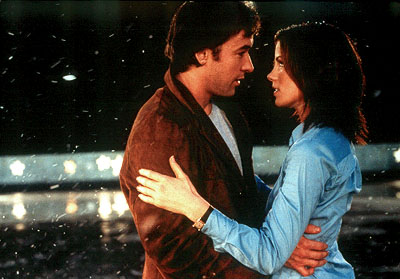Editor’s note: Guest contributor Catherine Cook is the co-founder of MyYearbook, a social network for meeting new people.
When John Cusack and Kate Beckinsale reach for the same pair of black gloves in the movie Serendipity, they meet and fall in love. The goal of social discovery applications is to engineer this kind of serendipity. By leveraging demographic and interest data, and by providing good reasons to interact with strangers, this emerging category seeks to make meeting people feel fun and natural.
And it’s not just about dating. Most people I know I met through serendipitous encounters. Whether it’s the friend I bumped into at the college bookstore as a confused freshman or the boyfriend I met at the coffee shop, most human relationships start the same way – in a serendipitous moment.
But not a random moment. I wasn’t waiting in a random line in a random store in a random city; I was waiting in my college bookstore, surrounded by people in close proximity with shared ambitions and life stages. Even at the coffee shop, it’s not a random cross-section of society that caffeinates there each day, but a group of people particular to the location and environment of Georgetown. Social discovery apps spend much of their time focused on this problem: how to infuse apparently “random” online interactions with the sort of affinity that leads to connection—not unlike a good mutual friend who enjoys playing matchmaker.
Yet there has traditionally been a distinction between meeting people online and doing so offline: intention. We tend not to wake up one morning and say, “I’m going to meet a friend today.” Sure, you need to be open to friendship to find it, and it helps to be in places where you might meet someone (malls, bars, casual sports, and so on), but you don’t start every conversation with “Do you want to be my friend?” The key for social discovery apps is to mirror those offline meeting places by providing an experience that’s still fun on the days when the serendipity part just isn’t happening.
Let’s face it: picking someone out of a list feels less than magical, yet that’s where online social discovery has traditionally been stuck. Whoever can make it feel as natural as grabbing a coffee, hanging out at the bar, or wasting time in the mall is going to win the race for leadership of what I believe will be a very big category. And there’s no shortage of contenders, from more established players like Badoo and Tagged to extremely interesting venture-backed services like Banjo and Shaker. My own company, MyYearbook, is also competing for the same prize (so I am completely biased, but I am also a complete believer in these trends).
How big could this prize be? Everyone in the world has a desire for friendship, especially as teens and young adults when so many long-lasting relationships begin. It is inconceivable to me that there will not be the mobile equivalent of the mall or the coffeehouse, that there won’t be a dominant meeting place that will intelligently take into account location, interests, and every other available cue to make serendipity happen.
What is at stake is nothing less than the future of meeting new people—of how people discover one another and make relationships in a world where mobile devices behave like extensions of the human body. How do you create a social graph not of the people you know, but of the people you want to know? How do you make meeting people fun, at scale, for everyone? How do you make all that serendipity stuff just happen? These are the challenges we face, because as friendships themselves increasingly migrate online, we think it’s only natural that friendship-making will too.
